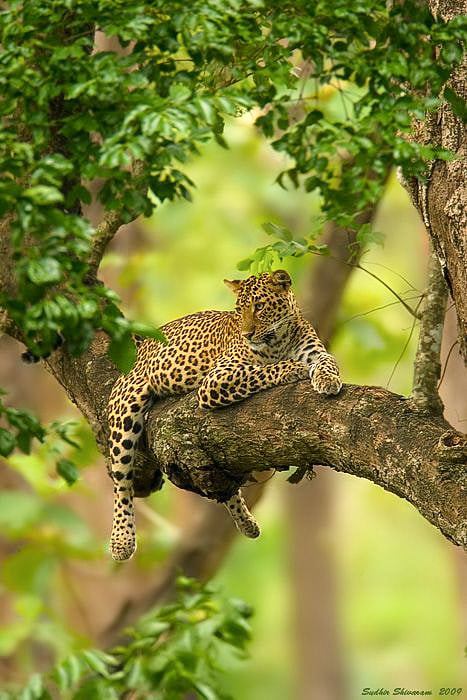As I stated in the title, the distribution of the common leopard is the widest of all the wild cat species. A natural consequence of this is that the habitats in which they live varies tremendously and is probably the widest range of habitats of all the wild cat species. being highly adaptable, they can live in any habitat except true desert. They are not constrained by habitat but by predator competitors and the presence of humans.
Leopard habitat
As mentioned, the leopard habitat is almost any habitat but excludes true desert but preference is given by the leopard to cover provided by forest. It’s diet is equally varied as a consequence, from beetles to eland, an antelope whose habitat is the African savannah.

Leopards usually live in forests near rivers, woodlands and grasslands. But as stated this wild cat is very adaptable to the extent that in the far east of Russia it inhabits temperate forests and temperatures in winter that can be as low as –25 °C.
The leopard is found in all forest types. It can also be found in scrub jungles, rocky hills and mountainous terrain from sea level to elevations of over 5000 m. It can live in areas where there is almost no rainfall. The leopard can also live in parts of West Africa and tropical Asia where there’s lots of rain; a mean annual rainfall of well over 2000 mm.
The leopard’s distribution is more likely to be limited not by the habitat to which the leopard can adapt very ably but by the presence of humans and of competitors. For example, in Africa it lives alongside lions and hyenas and in Asia it might share its habitat with tigers and wild dogs. These are competitors and they are capable of killing leopards and stealing their prey. Leopards therefore need some sort of access to cover to escape. Leopards can live in close proximity to humans as long as they are not persecuted and have somewhere safe to retreat to. They tend to be active at night to avoid humans.

Sometimes leopards are squeezed out of a certain habitat such as in Borneo where an abundance of small wild cat species monopolised the prey animals in trees and on the ground. This reduced the resources available to the leopard to the point where they vacated the area. In Sumatra, for instance, the tiger would constrain the freedom of movement of the leopard. Although the Sumatran tiger is critically endangered in this population decreasing.
The bottom line in terms of habitat for the leopard is that it can exist almost anywhere as it is highly adaptable and widely distributed.
Here are some selected specific locations where there is believed to be leopard habitat:
- Morocco – Atlas Mountains – very small “relic” population. I will presume that this is unsustainable but I might be wrong. Please click on the red marker in the map above to see a photo of this habitat.
- South eastern Algeria – Ahaggar region – this is a relatively new discovery (2006). This is an area where there is a national park,
- Arabian Peninsula – the Negev desert, the Wada’a mountains of Yemen, and the Dhofar mountains of Oman.
- Russian North Caucasus – mountain ridges and headwaters Avarskoe Koisu and Andiiskoe Koisu rivers (the source of a river).
- Georgia – south east: Vashlovani Reserve.
- Azerbaijan: Talysh Mountains
- Iran: “common” in the Alborz Mountains and found in the protected areas such as the Dena and Bahram’gur protected areas.
- Pakistan – montane areas (of the forest and below the tree line).
Distribution of common leopard
A wide distribution means a wide range of habitats which further translates to an adaptable wild cat and the leopard is certainly that. This is partly because of their bold and stealthy character.
The embedded map (second down) is a map showing places where videos have been made of the leopard hunting. To see them in their habitat please click on the red markers. The red is the “historic range” (courtesy Wikipedia® user: Altaileopard- I believe this to mean from before 1996 but they are unclear) and the cyan lined areas are what is believed to be the true leopard range as at Sept. 2009. It comes from the IUCN Red List of Threatened Species™ (Red List) website. They should have a handle on the current range although it seems that wild cat ranges can always be refined and they will definitely always need to be constantly upgraded. Although the range is still large it is about half what it was.

Here are some reserves within the leopard range where this cat lives. Reserves are pretty much where it will be found in Africa and India.

Some links to more
Below are some more pages on the leopard.

